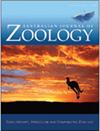澳大拉西亚蜥蜴性别特异性遗传标记的特征和交叉扩增及其对理解性别决定和社会复杂性进化的意义
IF 1
4区 生物学
Q3 ZOOLOGY
引用次数: 1
摘要
摘要性别是一个普遍存在的因素,它支撑着一系列性状的功能性表型变异。虽然性别通常可以从形态上区分,但在某些物种中这是不可能的。因此,如果我们要将性别纳入对生态或进化过程的理解,性别识别的遗传标记的发展是关键。在这里,我们开发了一种遗传标记,用于识别一个标志性的澳大利亚蜥蜴群体的性别,即以其复杂的社会行为而闻名的埃及群体。我们使用限制性位点相关DNA测序来表征该群体的一个关键成员——白斑Liopholis whititii的性别特异性基因序列,并为其中四个假定的性别特异性序列设计了引物。这些引物在一些物种中扩增,但不是所有物种。我们的研究结果提供了几个重要的见解。他们认为,在这一群体中存在着XX/XY性别决定系统的保守性,以及性别特异性基因组区域,这些区域似乎独立于其他物种中发现的保守基因组区域。从更广泛的意义上说,对埃及群体的性别标记的发展开辟了一系列潜在的研究问题,这些问题与性别在社会行为的调解中所起的作用有关,并通过这种作用,社会生活的出现和稳定。本文章由计算机程序翻译,如有差异,请以英文原文为准。
Characterisation and cross-amplification of sex-specific genetic markers in Australasian Egerniinae lizards and their implications for understanding the evolution of sex determination and social complexity
Abstract. Sex is a pervasive factor that underpins functional phenotypic variation across a range of traits. Although sex can usually be distinguished morphologically, in some species this is not possible. The development of genetic markers for sex identification is, thus, key if we are to incorporate sex into an understanding of ecological or evolutionary process. Here we develop genetic markers for the identification of sex within an iconic Australian lizard group, the Egernia group, which is notable for its complex social behaviour. We used restriction-site associated DNA sequencing to characterise sex-specific genetic sequences for a key member of the group, Liopholis whitii, and designed primers for four of these putative sex-specific sequences. These primers amplified across some, but not all, species of the group. Our results provided several important insights. They suggest conservatism of a XX/XY sex determination system within the group as well as sex-specific genomic regions that appear independent of the conserved genomic regions identified in other skink species. More broadly, the development of sex markers for the Egernia group opens up a range of potential research questions related to the role that sex plays in the mediation of social behaviour and, through this, the emergence and stability of social life.
求助全文
通过发布文献求助,成功后即可免费获取论文全文。
去求助
来源期刊
CiteScore
2.40
自引率
0.00%
发文量
12
审稿时长
>12 weeks
期刊介绍:
Australian Journal of Zoology is an international journal publishing contributions on evolutionary, molecular and comparative zoology. The journal focuses on Australasian fauna but also includes high-quality research from any region that has broader practical or theoretical relevance or that demonstrates a conceptual advance to any aspect of zoology. Subject areas include, but are not limited to: anatomy, physiology, molecular biology, genetics, reproductive biology, developmental biology, parasitology, morphology, behaviour, ecology, zoogeography, systematics and evolution.
Australian Journal of Zoology is a valuable resource for professional zoologists, research scientists, resource managers, environmental consultants, students and amateurs interested in any aspect of the scientific study of animals.
Australian Journal of Zoology is published with the endorsement of the Commonwealth Scientific and Industrial Research Organisation (CSIRO) and the Australian Academy of Science.

 求助内容:
求助内容: 应助结果提醒方式:
应助结果提醒方式:


